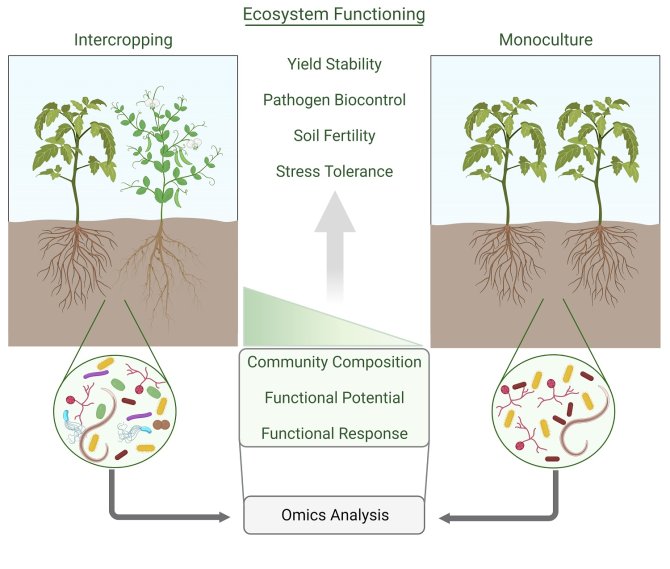
Project
Deciphering the soil microbiome for optimized intercropping
We aim to provide insights into the importance of soil biodiversity on crop performance in intercropping, to support the optimization and integration of intercropping into modern agriculture.
Background
Intercropping is the agricultural method of growing multiple crops simultaneously in a field. This method of sustainable intensification has recently gained attention for its additional positive effect on aboveground biodiversity and pathogen control. One vital aspect of intercropping that has yet to be characterized is its relationship with, and effect on, soil biodiversity. The soil microbiome, comprising of fungi, bacteria, protists and nematodes, plays a major role in plant performance, pathogen control and nutrient cycling. As the community composition of the soil microbiome is tightly linked to host identity, intercropping could thus promote soil biodiversity through crop diversification. In turn, increased soil biodiversity promotes ecosystem functioning and stability, boosting crop and soil performance.

Project description
In this multidisciplinary project, we will characterize the effect of intercropping on the soil microbiome, and in turn, the role of the soil microbiome in crop performance under intercropping. By sampling on field scale as well as host to host scale, we will gain both a broad and detailed overview of the effect of intercropping on the soil microbiome. Using high-throughput sequencing we will characterize soil microbiome community composition to gain insight into soil biodiversity, pathogen control and host influence. In addition, we will perform metagenomic and meta-transcriptomic analysis to study the functional potential and functional shift of the soil microbiome under influence of intercropping.